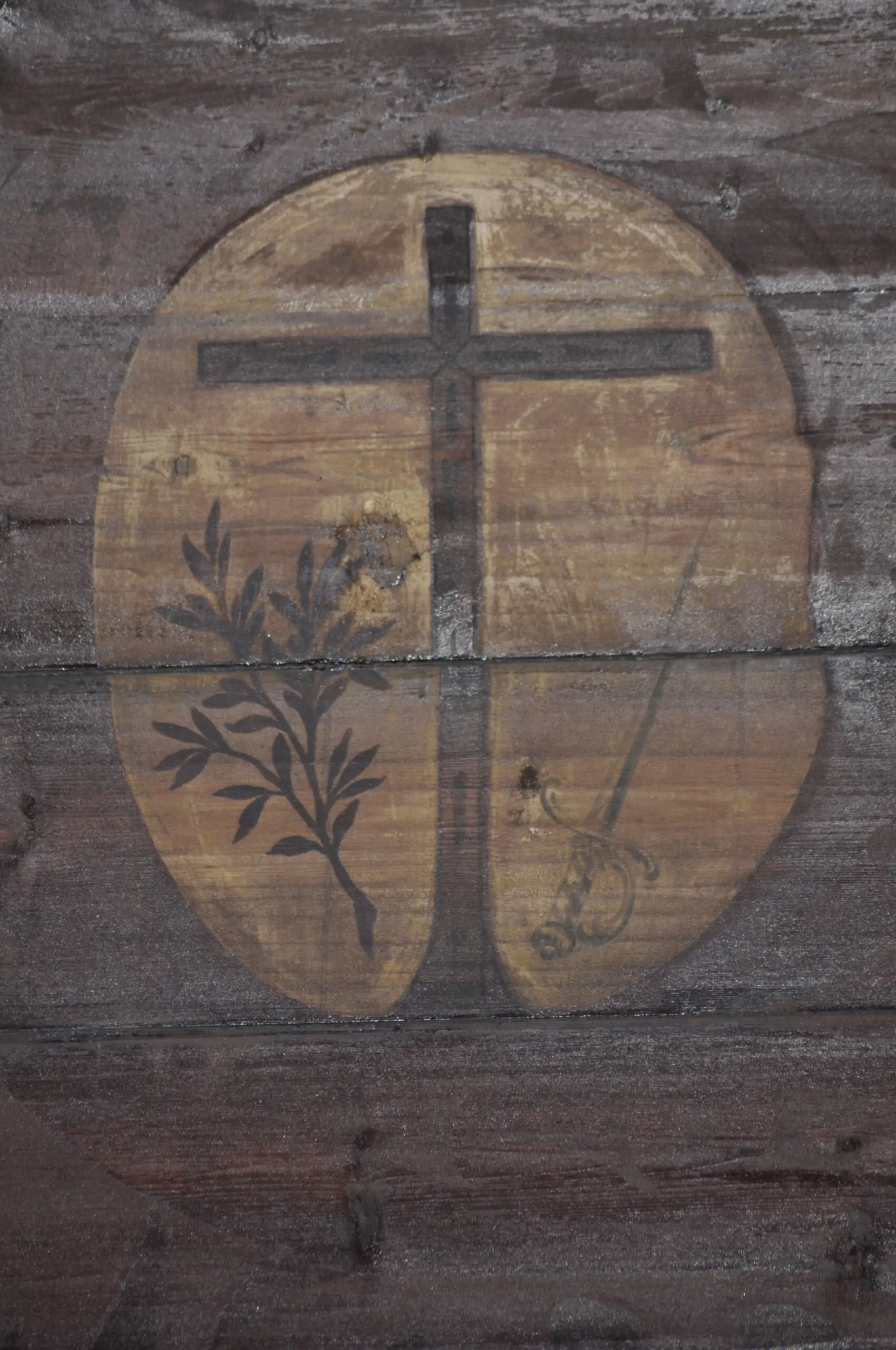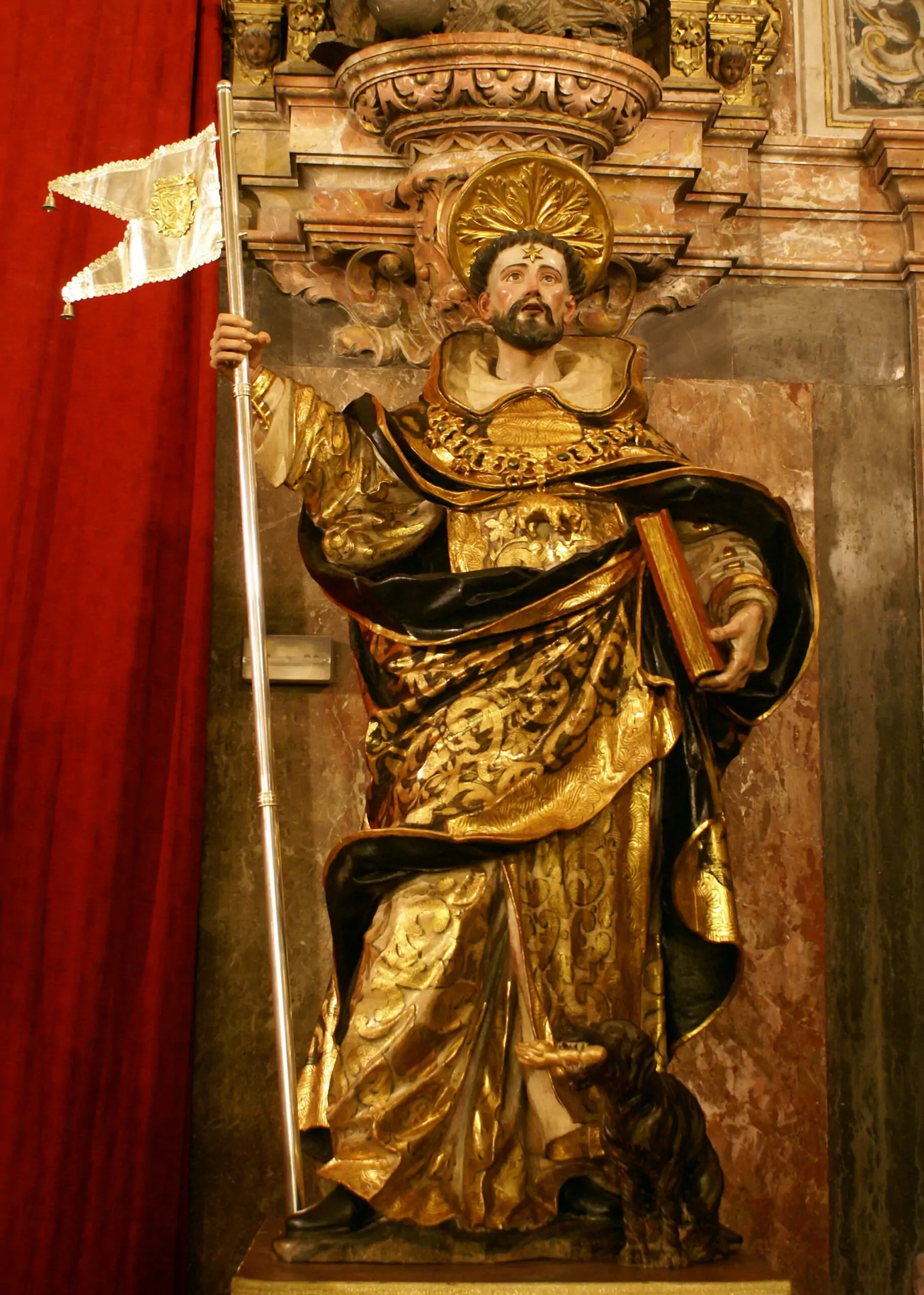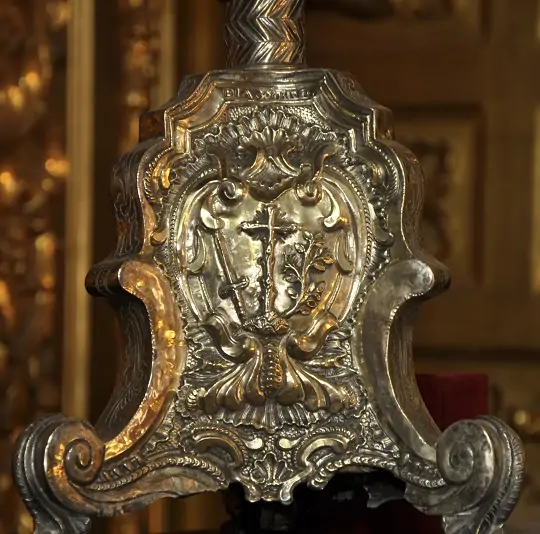First Seat of the Inquisition
History
First headquarters of the Inquisition in Seville and in Spain
A cross crossed by a sword - representing justice - and an olive branch - symbolizing mercy - adorn the dome at the entrance of the temple on San Pablo Street. It is the emblem of the Holy Inquisition, reminding us that the Order of Santo Domingo played a very prominent role in it.
Today, the Inquisition may seem like an unsustainable coercion in matters of faith and religious freedom. Obviously, it was not so in the 12th century; its goal was to prevent the spread of heresy among the faithful and the defense of the Catholic faith. This is symbolically represented in the magnificent painting of "The Triumph of Faith" on the vault of the main altar of the parish.
Santo Domingo de Guzmán, the founder of the Dominicans, was an untiring fighter who strongly opposed the heresies of his time, especially the Albigensian heresy, to restore the unity of the Christian faith threatened by heretics. These heresies led to the creation of the primitive Inquisition in France in the year 1184. Fifty years later, in 1231-1233, Pope Gregorio IX created the Pontifical Inquisition through the bull EExcommunicamus, which was established in various Christian kingdoms in medieval Europe.
During the stay of Queen Isabella I of Castile in Seville between 1477 and 1478, the Sevillian Dominican Alonso de Ojeda, the prior of the San Pablo convent, convinced the queen of the existence of Judaizing practices among Andalusian converts. A report submitted, at the request of the sovereigns, by Cardinal Mendoza, Archbishop of Seville, and by the Dominican Friar Tomás de Torquemada, confirmed the suspicions.
In January 1481, the Inquisition tribunal was established in the San Pablo convent in Seville, with Friar Alonso de Ojeda as the prior. The Spanish Inquisition aimed, among other reasons, to maintain the purity of the faith, prevent Spaniards from falling into heresy, and prosecute behaviors and terms that indicated someone was Judaizing, Moorish, Lutheran, illuminated, or deviating from the Catholic faith. The connection of the Order of Santo Domingo with the defense of Truth is not surprising. The appointment of inquisitorial roles and functions was accepted by the Dominicans without any opposition.
About Friar Alonso de Ojeda, Ramírez de Solórzano states in his "History of the Convent of San Pablo in Seville": "(The convent) has had illustrious sons who have exalted religion, and to some (Fray Alonso de Ojeda) the kingdoms of Castile owe their spiritual tranquility and this most noble city of Seville owes its purity in the Christian and Catholic religion."
The Holy Office Tribunal began its activities with the San Pablo convent as its headquarters. In fact, the first inquisitorial condemnation was in 1481, and the first prison was in the San Pablo convent, according to Abad Gordillo. In this first auto de fe, the Dominican Friar Alonso de Ojeda preached, "zealous for the faith of Jesus Christ, he was the one who most sought this Inquisition in Seville."
After various problems in the organization and implementation of the new inquisitorial powers, Pope Sixtus IV appointed Tomás de Torquemada to the position of General Inquisitor in 1483 at the request of Queen Isabella. In total, there have been five General Inquisitors belonging to the Order of Santo Domingo: Tomás de Torquemada, the first General Inquisitor; Diego de Deza, Archbishop of Seville, in 1546; García de Loaysa, Archbishop of Seville, in 1546; Antonio de Sotomayor, confessor of King Philip IV, in 1632; and Juan Tomás de Rocaberti, Archbishop of Valencia, in 1695.
Remnants of that historical period, the temple preserves the candelabras located on the sides of the image of Santa María Magdalena, adorned with the emblem of the Holy Inquisition. In addition to the Inquisition emblem on the dome at the entrance on San Pablo Street, the auto de fe painted by Lucas Valdés in the transept is found on its walls. Traditionally, this auto de fe was identified with that of Diego López Duro, a merchant from Osuna, who was burned alive for Judaizing on February 28, 1703.



